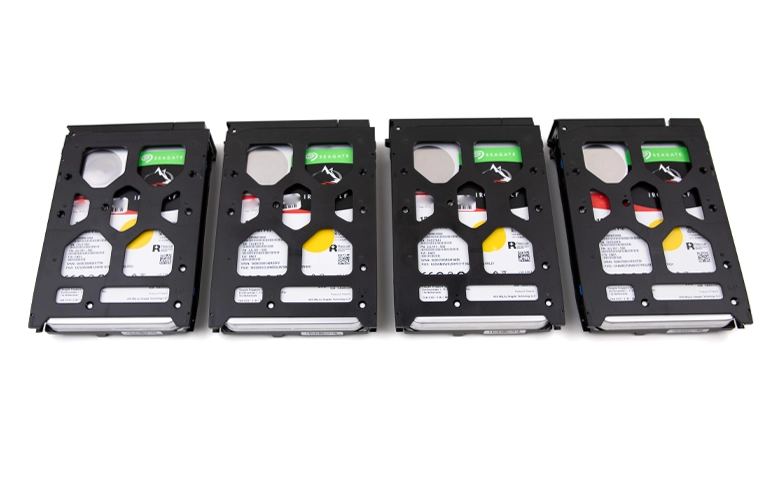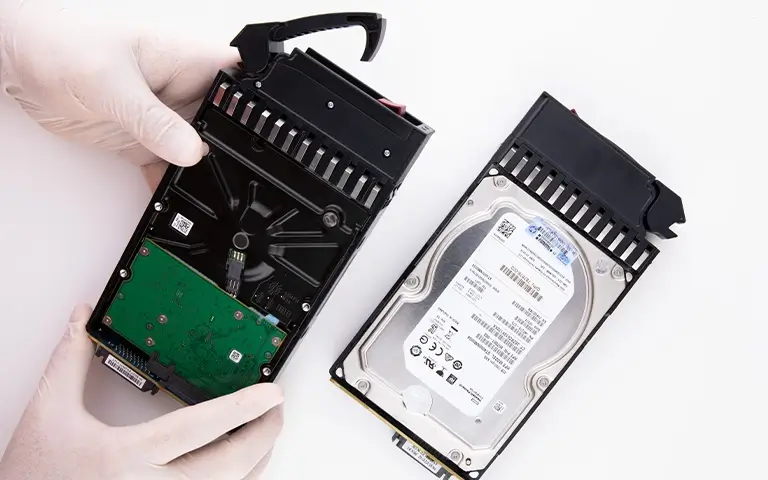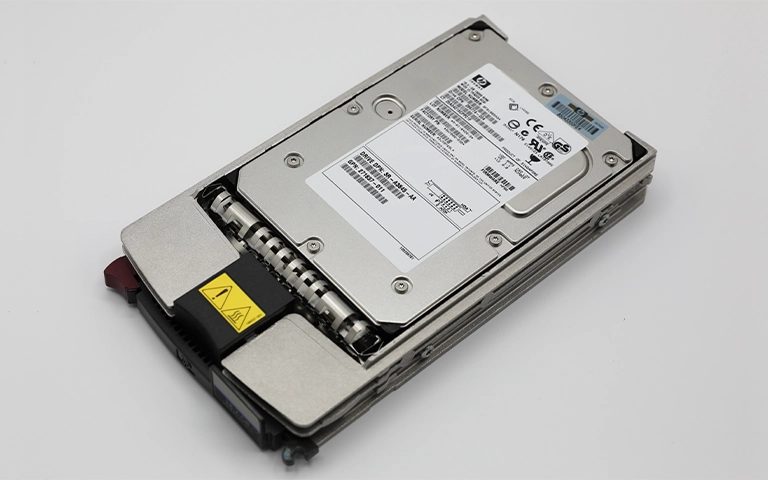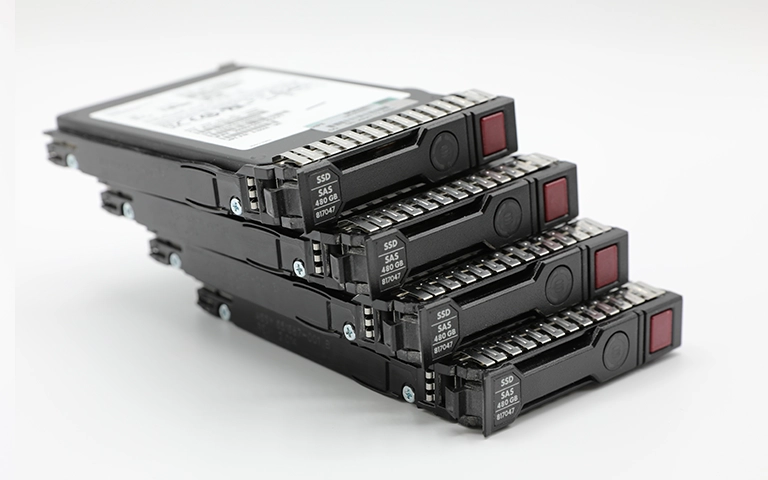If you have ever tried to build or manage a data storage system, you have likely faced the question of whether to prioritize speed or data protection. This is where RAID 0 and RAID 1 come into play, two configurations that appear similar but operate very differently.
Choosing the right setup can mean the difference between smooth performance and permanent data loss.
In this post, you will learn what separates RAID 0 from RAID 1, how each handles data, and which one best fits your business or personal storage needs.

Why Choosing Between RAID 0 and RAID 1 Matters
When setting up a data storage system, one of the first decisions you face is choosing between speed and safety. RAID 0 and RAID 1 are two of the most widely used configurations, yet they serve very different purposes.
RAID 0 is built for performance, giving users faster read and write speeds by combining multiple drives into one large volume.
RAID 1, on the other hand, focuses on redundancy, creating exact copies of your data to ensure protection if a drive fails.
Understanding these differences is critical when designing a system that balances efficiency, cost, and reliability. This article explains how each RAID type works, where they perform best, and what to consider before making your choice.
Understanding RAID 0: Performance Without Redundancy
RAID 0, also known as striping, combines two or more hard drives into a single logical volume. It divides data into blocks and writes them across all drives simultaneously.
This method increases read and write speeds, making it ideal for applications that require fast data access, such as gaming, video editing, or temporary file processing.
However, RAID 0 has one major weakness: it does not provide redundancy.
If one drive fails, all data across the array is lost because pieces of every file are stored on multiple drives.
For users who need performance but can afford to risk data loss, RAID 0 configuration details offer valuable insights into setup and maintenance.

Understanding RAID 1: Redundancy and Reliability
RAID 1, known as mirroring, focuses on data protection rather than speed. In this setup, every piece of data is written to two or more drives at the same time.
If one drive fails, the other still holds an exact copy, allowing you to continue working without losing information.
This structure makes RAID 1 ideal for systems that store important or sensitive data, such as servers and business databases.
Although it does not increase storage capacity or significantly boost performance, its reliability makes it a preferred choice for environments where uptime and data integrity are critical.
You can learn more about how mirroring works in a RAID 1 setup.

RAID 0 vs RAID 1: Key Differences
RAID 0 and RAID 1 represent opposite ends of the storage spectrum. RAID 0 focuses on performance, while RAID 1 prioritizes data safety. The best choice depends on whether you value speed or redundancy more.
For a broader overview of how these setups compare to other RAID types, you can read about the types of RAID configurations used across different industries.
Which RAID Setup Fits Your Needs?
The right RAID configuration depends on what matters most to your workflow — speed or data safety.
Choose RAID 0 if you need maximum performance for tasks like video rendering, software testing, or temporary data processing. It delivers fast transfer rates but should only be used when data can be easily replaced or backed up elsewhere.
Choose RAID 1 if your priority is data protection. It is ideal for small businesses, file servers, or databases where reliability and uptime are more important than raw speed.
If you operate a server or business storage system, explore the available server RAID configurations to find the setup that aligns with your performance and security needs.

What Happens When RAID 0 or RAID 1 Fails?
A RAID 0 failure can be severe because the array has no redundancy. If even one drive fails, the entire system becomes inaccessible.
Since data is split into pieces across multiple drives, recovery requires advanced reconstruction techniques performed by specialists.
RAID 1, while more resilient, is not immune to failure. Although one drive can fail without immediate data loss, both drives can still become corrupted during rebuilds or due to power issues. Attempting to repair the array without the right tools often worsens the damage.
When either setup fails, professional diagnostics are essential. You can review our guide on RAID failure troubleshooting to understand early warning signs and safe recovery practices.
Fast turnaround times for business-critical data
Expert Help for Failed RAID Arrays
When your RAID 0 or RAID 1 setup fails, fast and professional intervention can make the difference between successful recovery and permanent data loss. Attempting to rebuild or reinitialize the array without expert guidance may overwrite valuable data.
At RAID Recovery Services, our engineers specialize in restoring data from both RAID 0 and RAID 1 systems. Using advanced diagnostics and secure recovery procedures, we can rebuild damaged arrays and retrieve inaccessible files while maintaining full data integrity.
If your system experiences corruption, drive failure, or a degraded state, contact our team for professional assistance. You can also review a detailed RAID 0 recovery case to learn how our process works from evaluation to full recovery.

Trust the experts with proven results
Frequently Asked Questions
What is the main difference between RAID 0 and RAID 1?
RAID 0 focuses on performance by splitting data across multiple drives, while RAID 1 prioritizes redundancy by mirroring data. RAID 0 offers faster speeds but no protection, whereas RAID 1 ensures data safety even if one drive fails.
Is RAID 0 faster than RAID 1?
Yes. RAID 0 provides higher read and write speeds because it distributes data across drives. RAID 1, while slower, offers better reliability and is preferred for critical storage environments.
Can data be recovered from a failed RAID 0 array?
Yes, but it requires advanced expertise. Since RAID 0 has no redundancy, recovery involves reconstructing data from multiple drives. RAID Recovery Services has the tools and experience to handle such cases safely.
What happens if one drive fails in RAID 1?
If a single drive fails in RAID 1, the array remains operational using the mirrored copy. However, it becomes vulnerable until the failed drive is replaced and rebuilt.
Which RAID type is better for business storage?
For most businesses, RAID 1 is the better choice because it provides data protection and continuity. RAID 0 is suitable for temporary or performance-intensive tasks where data loss is not critical.